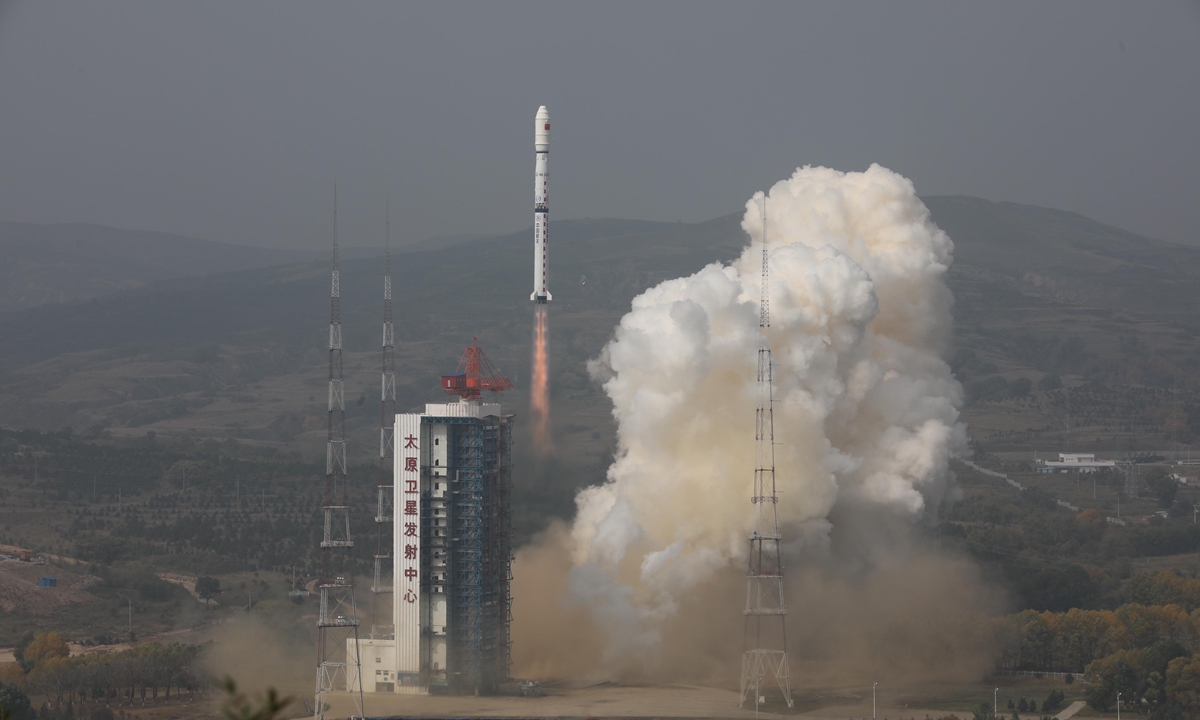China launches 2 environmental monitoring satellites for emergency responses
Source: Global Times Published: 2020/9/27 18:04:53

China successfully launches two environmental monitoring satellites HJ-A and HJ-B via a Long March-4B carrier rocket from the Taiyuan Satellite Launch Center in North China's Shanxi Province on Sunday. Photo: VCG
China successfully launched two environmental monitoring satellites at 11:23 am on Sunday via a Long March-4B carrier rocket from the Taiyuan Satellite Launch Center in North China's Shanxi Province.
The HJ-2A and HJ-2B satellites will replace the 12-year-old HJ-1A and HJ-1B.
The satellites have seen great improvements in data acquisition and technical performance, compared with the older generation of environmental monitoring satellites.
The two 16-meter optical satellites adopt the CAST2000 Satellite Platform and are characterized by their high mobility, high accuracy control, high stability, strong load adaptability and long life.
Both satellites are equipped with four payloads, including a 16-meter camera, hyperspectral imager, infrared camera and atmospheric corrector, and can provide 16-meter multi-spectral, 48-meter hyperspectral and 48-meter infrared image data.
The satellites will be mainly used for disaster prevention and mitigation as well as environmental protection, and provide strong support for monitoring of natural disaster elements, macro-monitoring of land use and supervision of water resources. They will also help with dynamic monitoring and yield assessment of crop areas, and earthquake emergency rescue.
They can acquire one global image of visible and infrared multispectral data in two days and one global image of hyperspectral data in 15 days, an ability that is 10 times higher than that of the previous generation.
The spatial resolution of visible, infrared and hyperspectral data of the HJ-2A and HJ-2B satellites were improved by up to two times, with the spectral resolution and the signal-to-noise ratio also greatly enhanced.
Compared with the satellites of the same type in other parts of the world, these satellites have the largest width under the same resolution and excel in large-scale disaster observation. They are able to complete an observation covering the entire globe in two days.
The Sunday mission is the 348th flight of the Long March rocket family.
The old generation satellites HJ-1A and HJ-1B, which were launched in 2008, have acquired large amounts of remote sensing data during their in-orbit operations and provided important evidence in some of China's major natural disasters, such as the 2008 Wenchuan earthquake in Southwest China's Sichuan Province, the 2010 Yushu earthquake in Northwest China's Qinghai Province, and the 2010 Zhouqu mudslide in Northwest China's Gansu Province.
RELATED ARTICLES:
Posted in: AIR & SPACE